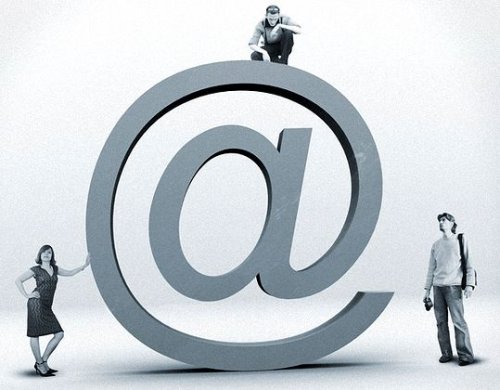
We use this key regularly when sending emails and separating our data from the server's domain name with the @ sign. It's very convenient and simple. But people have been using the same or a very similar symbol since ancient times…
Understanding the history of the @ sign's appearance on computer keys is extremely difficult – it's all too confusing and subject to varying interpretations. Let's at least try to get closer to the debatable truth, which, as we know, always lies in the middle. We'll talk about theories. There are many of them, and they don't complement each other, but rather break the logical chain at the most interesting point. The reason is simple: all the theories are based not on direct evidence, but on indirect assumptions. Some of them are plausible, while others simply evoke a smile and a desire to twirl a finger at your temple. Which to classify and into which category? Decide for yourself.
Historically, the @ sign has been linked to purely economic needs. Specifically, it's mentioned that in Portugal, this sign was used to indicate weight. Well, probably in a similar way to how we write weight in letters: t-kg-g-mg. However, it's not entirely clear why they put a curl around the letter.
It is also said that in Venice, such a symbol was used to indicate the specific amount of liquid contained in an amphora. The fact that it was referring specifically to the amphora itself was supposedly emphasized by the flourish. Professor Giorgio Stabile of Rome discovered a text in a 16th-century document where the quantity of wine was designated by the letter “a” with a flourish.
However, each country has its own explanation for the @ sign. Karen Chang from Taiwan believes that the sign did indeed come to Asia from Europe, but had no connection to economic activity. She says it's simply that in medieval English, the preposition “ad” was often replaced by the @ sign.
It's been suggested that the @ sign is related to the commercial “at” sign (equivalent to our “po”). This is entirely plausible, as the first typewriters had a key with this sign. And since computer keyboards are in many ways similar to typewriter keyboards, the key with this sign was “automatically” adopted by the computer industry. But to be fair, it should be noted that the old Spanish unit of weight, the arrobe (about 13 of our kilograms), also used the @ symbol for brevity.
But who, and when, thought of using the @ sign in email? The @ key itself was already present on computer keyboards, but it was used only in business. And even then, it was very rare, as its ergonomic placement on the keyboard is too awkward for right-handed people—very high and on the left. Ray Tomlinson, an employee of the American company BBN Technology, who was developing the first email program for the Internet, for a long time couldn't figure out how to separate the email username from the server's domain name. All his attempts to separate them with words, mathematical symbols, or numbers were met with an error message from the machine, mistaking the symbols for a non-existent subdomain. The problem was solved only by using the @ sign, which is virtually unknown to the machine, for separation.
In the RU zone, this sign is commonly called a “dog.” But this name for the @ sign is only used on the Russian-language internet. In other zones, it's called something else. How exactly does it translate? In Poland, it's called a “monkey,” in Italy, a “snail,” in Greece, a “duck,” and in other countries, it's called an “elephant's trunk,” a “frog,” a “worm,” a “tick.” But why is the @ sign colloquially called a “dog” on the Russian-language internet? Well, it does look like a curled-up dog—that's the first theory. The second theory points to the once-popular game “Adventure.” Its main character had a dog, @.
Because of this symbol, the International Telecommunication Union had to introduce an additional code into Morse code to represent the @ symbol. It appears and is transmitted over the air as follows: (• – – • – •). Of course, without parentheses. They had to be included because, in writing, the final period could be mistaken for the complete end of a sentence.
In fact, experts say it would have been perfectly possible to invent any other character or use operating system-specific symbols to separate the email username from the server domain. But this would have required complicating the keyboard with an extra key. And was it even worth it if users had quickly and easily become friends with the @ sign, accepting it as a given according to the axiom?





